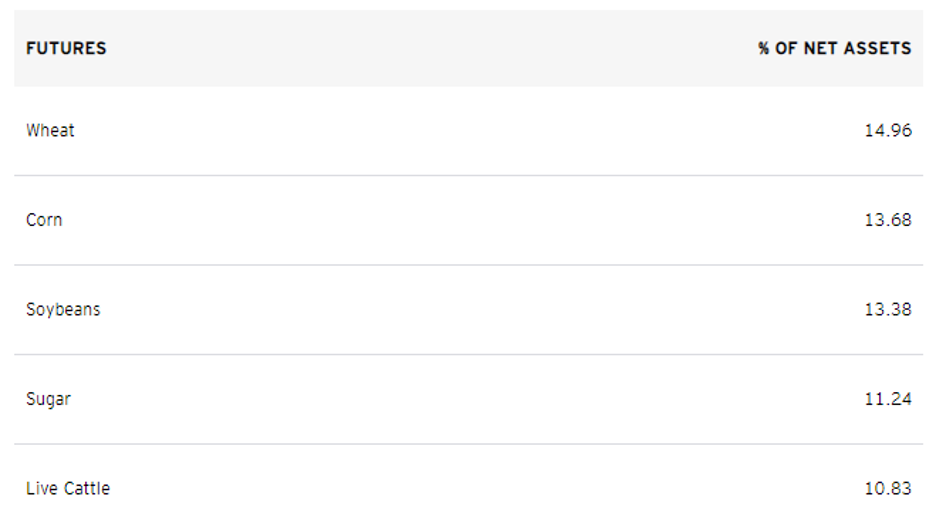[ad_1]
The war in Ukraine is building food stuff shortages … historic spikes in connected input prices … the growing possibility of an inflationary foods-value spiral … how to secure your wealth
There’s conflicting information about Russia/Ukraine peace attempts.
Yesterday, there was optimism. The Wall Street Journal reported that Russia claimed it would appreciably lessen its army routines close to Kyiv and Chernihiv, to improve have confidence in for the duration of negotiations.
Now, pessimism. The Wall Street Journal features a story quoting Kremlin spokesman Dmitry Peskov, saying:
No 1 mentioned that the sides have manufactured headway. We can’t position to something specifically promising.
The entire world requires this conflict to finish for several good reasons. But at the leading of that listing is a single thing:
Avoiding world-wide foodstuff shortages, and the ensuing domino impact of humanitarian, financial, and geopolitical crises.
As we’ve mentioned before in the Digest, Ukraine accounts for much more than 10% of the world wide wheat sector. Throw in Russia, and that share jumps to additional than 30%.
It is not just wheat. There’s also corn and barley, which are significant in feeding livestock. With each other, Ukraine and Russia make up just less than 30% of the world’s barley offer.
Then there’s sunflower oil, which is one particular of the world’s key vegetable oils applied for cooking. Ukraine and Russia make up 80% of the world offer.
Big photograph, it is believed that Ukraine and Russia alone account for 12% of the “calories” that the planet consumes.
With all of this in jeopardy, the risk of world destabilization from meals shortages is accelerating at a perilous tempo.
From Bloomberg:
The meals shock in Ukraine looks devastating.
Grain and sunflower oil in storage from past year’s harvest just cannot be transported simply because of fighting and port closures.
Shelling and gas shortages could interfere with spring planting and fertilizer farmers have to have to apply to the winter season wheat crop as it emerges from dormancy.
Infrastructure damage, labor shortages and continuing conflict could also compromise the summer months harvest and transportation of regardless of what is manufactured.
Sanctions and disruption of Black Sea shipping routes also will limit Russian exports, outside of grain.
Russia, a crucial world provider of fertilizers, before this thirty day period instructed producers to halt exports. Russian ally Belarus, yet another foremost fertilizer source, is also becoming hit with sanctions.
***Let’s zero in on fertilizer to superior comprehend the scope of the challenge
The largest exporter of fertilizer in the planet is Russia. Belarus, a puppet condition of Russia, is number six.
Alongside one another, the two nations make up 17.8% of world-wide fertilizer exports.

Source: WorldsTopExports.com
So, supplied sanctions and disruptions to these exports, what is transpired to world wide fertilizer costs in the latest months?
From Bloomberg:
Fertilizer price ranges continue to spike to documents as Russia’s invasion of Ukraine places a massive portion of the world’s fertilizer offer at risk, incorporating to worries above soaring world foods inflation.
A gauge of selling prices for the nitrogen fertilizer ammonia in Tampa surged 43% to $1,625 for each metric ton Friday, a file for the 29-year-previous index.
Production outages and limited global source are driving the soar, in accordance to a note from Bloomberg Intelligence.
Underneath, you can see the price of North American fertilizer exploding to history highs.

Source: Bloomberg
One analyst on Bloomberg Tv set pointed out that fertilizer rates, which ordinarily make up about 30% of a farmer’s spending plan, will price tag 50% this year.

Resource: Bloomberg Intelligence
When domestically this is troubling on quite a few concentrations, the effects on the developing earth is significantly more dire.
From Bloomberg:
The disruption of very important food stuff provides has presently prompted protests in Iraq in excess of foods rate raises that govt officers blamed on the Ukraine war.
Egypt, the world’s most significant wheat importer, turned to the IMF for aid Wednesday as food and fuel rate surges put stress on general public finances.
The fallout is reminiscent of the last big spike in world wide foods price ranges that became a catalyst for the 2010-2012 Arab Spring, which toppled prolonged-ruling governments in Tunisia, Libya and Egypt. It also ignited Syria’s brutal civil war and the resulting refugee disaster in Europe…
…cost raises stemming from the war and ensuing sanctions on Russia will — without the need of action — force far more than 40 million supplemental men and women into severe poverty, defined as subsisting on fewer than $1.90 a day…
Mark Lowcock, former UN under-secretary-basic for humanitarian affairs and crisis aid coordinator, stated billions of dollars in extra food items assist will be expected to avert “mass starvation” in poorer nations.
Tragically, this is taking place even whilst some farmers reduce their output.
For case in point, The Wall Street Journal tells the story of an Argentinian wheat, corn, and soybean farmer who will slice output 30% this 12 months.
Why?
The charge of fertilizer is now also large.
***Are we beginning to see a self-perpetuating inflation food items spiral?
Very last 7 days, at the grocery shop, I saw a woman with about 25 packs of rooster breasts and in all probability 40ish packs of spaghetti in her cart.
This hoarding, when easy to understand, is earning the problem even worse.
From Barron’s:
Initiatives by homes to stockpile and pull forward shelling out is the incredibly habits economists and central bankers dread, supplied the self-fulfilling character of inflation anticipations and their essential job in keeping over-all prices stable.
The plan: If individuals be expecting increased price ranges tomorrow, they will purchase right now and aid ensure those better potential costs.
Marketplace-centered steps of inflation anticipations have jumped considering that the Ukraine invasion survey-based actions also mirror elevated expectations, nevertheless the newest surveys had been done right before the invasion of Ukraine.
Consumers’ increasing anticipations for bigger charges are not a coincidence. D’Acunto states over-all inflation anticipations are most intensely influenced by alterations in grocery charges, even as these kinds of rates are stripped from core inflation metrics.
Two months in the past, about a fifth of U.S. homes mentioned they envisioned wide cost inflation of at least 10%. D’Acunto states that share has shot up to above 60% of households as grocery prices swiftly raise.
The upshot: As grocery charges climb, so do the odds of unhinged inflation anticipations, opening the door to an upward spiral in costs.
As we have pointed out in the Digest, better food stuff costs greatly boost the danger of economic downturn. That is due to the fact when the U.S. shopper has to shell out exorbitantly higher rates for the fundamental principles of residing, there’s fewer money for discretionary purchases that retain the economy healthy.
And in fact, yesterday, the recession-view indicator we’ve been tracking for months – the “10-2 spread” – activated.
If history repeats alone, this party implies we’ll have a economic downturn inside the following two years.
***So, what can you do about all this?
Initial, to be apparent, if the environment continues down this route toward meals shortage, it will be an unspeakable tragedy. So, our finest worry is with the wellbeing of the less fortunate all around the entire world.
That reported, the likely food items/commodity inflation spiral poses really serious risks to your wealth.
As techniques to consider to defend your purchasing energy, you could search to the Invesco DB Agriculture Fund, DBA.
Invesco describes it as a fund “designed for investors who want a value-powerful and handy way to spend in commodity futures.”
Listed here are its prime 5 holdings:

Source: Invesco
It is up 12% here in 2022.
If you’d like agriculture exposure blended with other commodities, there is the Invesco The best possible Produce Diversified Commodity ETF, PDBC. Its top holdings incorporate aluminum, zinc, copper, oil, wheat, soybeans, corn, and gold. It is up 28% on the year.
***For one of the purest performs, you could spend instantly in major-tier fertilizer organizations
This is what legendary investor, Louis Navellier, has been undertaking in Accelerated Revenue.
I won’t reveal Louis’ certain picks out of respect for subscribers, but if you are on the lookout for thoughts, some of the major fertilizer corporations in the globe involve Yara Worldwide, Nutrien, and Mosaic.
As you can see down below, on the calendar year, they’re up, respectively, 11%, 37%, and 70%

Resource: StockCharts.com
Wrapping up, let’s cross fingers that peace talks in Ukraine lead to the resolution of this conflict.
If not, the domino impact will be a humanitarian catastrophe with sizeable financial fallout. If you’re wanting for ways to hedge your portfolio, choose a look at the possibilities we’ve highlighted these days.
Have a good night,
Jeff Remsburg
[ad_2]
Supply url






